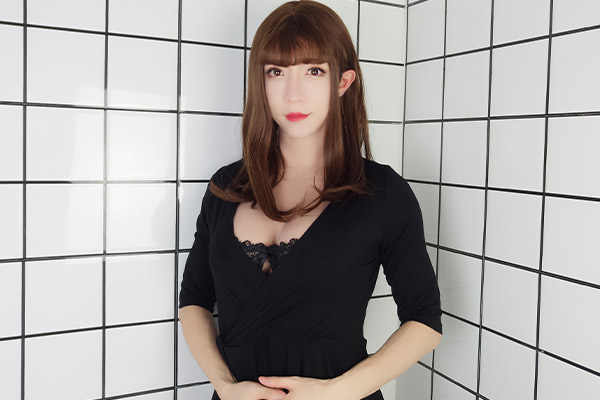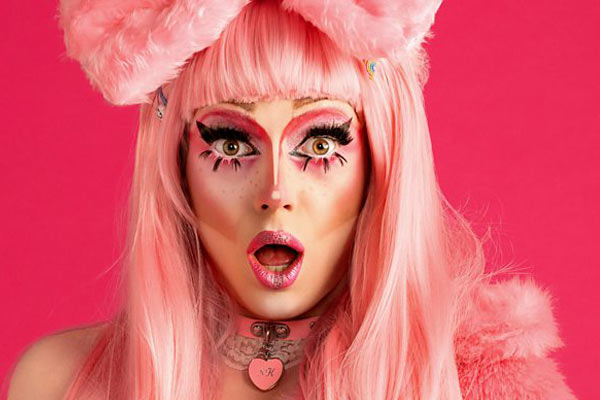What’s the Difference Between Crossdressing and Drag
Some people can’t tell apart crossdressers from drag queens. Those are very similar categories, but they do have some crucial differences. Questions involving gender identity and sexuality are common, but I can answer them. In this article, I’ll point out all the main differences and describe what makes each of them unique.

Both crossdressers and Drag queens have a very different historical origins. They have different gender identities and psychologic characteristics, as well as social behavior. Crossdressing is a very subjective activity, while Drag’s purpose is art and entertainment. Their styles of clothing and makeup are also very different, making it easier to tell them apart.
Those differences are very complex, and that’s why many people can’t distinguish them. They are generally unaware of how different they are, because of common stereotypes. With that said, let me help you understand those differences in depth.
TABLE OF CONTENTS
1. Historical context
Let me start with the history of Drag, as something linked to theaters and performances. In medieval England, it happened to a certain degree. It was very common to see men performing dressed as women in theaters, for the sake of entertainment. Yet, during the late 16th century, religious authorities started to oppose this practice. It would only make a comeback at the end of the 19th century under the name of “female impersonation”. They were men who dressed as women and hosted shows in pubs, clubs and once again theaters.
One of the most famous “female impersonators” during these times, was Julian Eltinge. His most famous show was “the fascinating widow”. He was famous for portraying women at his performances, only revealing himself as a man in the end.

This was only the start of what is nowadays known as drag. The ones like those we know today started to appear during the early to mid-1900’s, away from the mainstream public. That’s because, at least in the Us, they were associated with homosexuality and with crime. During these days, the US had heavy laws against it, so they performed only at night, in clubs. In these clubs, the LGBT culture was welcome, and people defied the boundaries of gender.
The history of crossdressing, on the other hand, can be traced down to the late roman empire. One of the first cases of crossdressing registered is of the Roman emperor Heliogabalus, in 218 AD. He wore feminine clothes and makeup on a daily basis and acted as a woman very often. This wasn’t very well accepted in ancient Rome, and even though he was the emperor, he was criticized and even murdered. He was brave enough to be himself, and his legacy lives to this date.

Medieval and modern France also had crossdressers in important roles that deserve to be mentioned. The very first is Jeanne d’Arcy, a woman that cross-dressed as a man. She did so to fight in the 100 years’ war and was later recognized as a saint by the Catholics. The other example is Charles chevalier Deon, a French soldier and spy from the 18th century. He crossdressed under the disguise of “Lia de Beaumont” to infiltrate the Russian court during the seven years’ war (1756 – 1763). Deon was later well known for dressing up as a woman and had permission from the king to do so.

Even though crossdressers and Drag queens had a very different origin, they have something in common. both of them suffered from the anti-crossdressing laws in the US, especially during the 1960s. They only found more acceptance after the stonewall riots, in 1969. They stopped being prosecuted and arrested, as society started to welcome them, which brings us to the present days. Drag queen is again a mainstream form of entertainment, thanks to shows such as “Ru Paul’s Drag Race”. And meanwhile, crossdressers can dress up at will in public or at home. While a few countries are still hostile towards them, I’m sure we’ll soon be able to be ourselves everywhere.
2. Psychology
I also want to talk about the psychological characteristics of crossdressers and drag queens. What are their motivations? How do they perceive gender? Does it have any influence on their sexual orientation? Let me explain how it works.

First of all, let’s talk about gender. I must make it clear that neither crossdressing nor drag is gender-exclusive. Gender is a spectrum of male and female characteristics, that may or may not include biological sex. Every single person experience gender in their own way.
As crossdressing can be defined as “dressing in attire typical of another gender”, it’s more of an identity matter. You are a crossdresser only if you consider yourself to be, no matter your gender. And as Drag is some sort of performance, anyone can be a drag queen or king. It only depends on how they want to present themselves and perform.
How do their motivations differ?
The motivations of crossdressers are very diverse. Some people do that as a hobby, while some do it as an art, and others deal with dysphoria. Crossdressing is a very personal experience, and I dare to say that every motivation is unique. I want you to understand that there is nothing wrong with crossdressers and that it’s not a mental illness of any kind. Our motivation is something personal, and generally nothing but a way to express ourselves.

But drags have a very noticeable motivation: Entertainment. Drag is pure art, in a way that is done in a public way more often than crossdressing. Crossdressing is a personal experience, done for personal purposes. Drag queens generally have an audience. They are performing, and such performance must be watched.
So, which gender are they attracted to?
It depends on the person. Being a crossdresser or a drag queen doesn’t make you gay, but it also won’t prevent you from being. What defines to which gender someone’s attracted, is said person’s sexual orientation.

For example, my case: I’m a genderfluid person, which is a non-binary gender identity. But my biological sex is male, and I’m only attracted to females. That makes me straight when I’m on the masculine side, but lesbian when I’m feeling feminine. But I identify as a crossdresser not because of that, but because of how I feel on the inside.
Gender has no impact on a person’s sexuality, nor does crossdressing or drag. Each person has its own sexual orientation and gender, so we can’t label them, even if they are crossdressers or drag queens.
3. Dressing Style
They are also a few differences between CD’s and drags in terms of clothing. For a crossdresser, any kind of clothing that is associated with the opposite gender will do. The sense of fashion and preferences will vary between crossdressers. They will dress up in both casual and formal attires, as well as lingerie.

But things are different for drag queens. It’s very rare to see drag in casual attire. They are often wearing very glamorous and fashionable outfits or even “exaggerated” in some cases. As their main goal is to catch the attention of their audiences, it’s common to notice bright and vibrant tones in their clothes. They might as well wear very tight corsets, and other types of shapewear the women wouldn’t use daily.

4. Makeup
Crossdressers tend to use makeup to feminize their facial features in a more natural way. They generally choose colors that are close to their skin tone, so it might blend in easier. Passing as a woman is desirable for many crossdressers, so they wear makeup with this objective. They try to recreate common feminine looks, in a realistic and convincing way that won’t draw unwanted attention.

Drag queens, on the other hand, will wear makeup as exaggerated as their outfits. Once again, the objective is to catch the attention of their audiences, for the sake of entertainment. You can expect vibrant colors, a lot of countering and a very colorful eyeshadow. It’s almost “over feminized”, portraying a caricature of a woman.

5. Social activity
This topic doesn’t go much further than what I’ve already said. Crossdressers are crossdressing to no one but themselves. They do so at home, for practice, but they might as well go out and try to pass publicly. However, the crossdressing community is bigger on the internet, with dedicated forums, blogs and threads.

Drags are more social, often performing in clubs and bars. They want to be in places where their performances can be watched by an audience, so they are less likely to dress up privately. Drag queens sometimes walk in groups, being friends with each other and socializing outside.

So, as we’ve seen, crossdressers and drags developed very differently throughout history. They have some similarities and suffered the same kind of discrimination together. However, they are two very different types of identities. While crossdressing is more subjective, generic and diverse in its meaning, Drag is more well-defined and precise as an activity. We can also say that crossdressers, in general, want to be perceived as women. meanwhile, drag queens are performing a character that is unrelated to their private identity. This is basically how we can tell them apart, in a more general definition, but remember: every person is unique.
Tagged With:Drag Queen , What is Crossdressing
1 comment
Leave a Reply
- What is a Crossdresser? Understanding the Behavior, Its Origins, and Social Context
- Crossdresser vs. Transgender: What’s the Difference and Why Does It Matter?
- Why Do Some Straight Men Enjoy Crossdressing?
- 7 Best Mtf Trans and Crossdresser Podcasts in 2024
- Journey With Roanyer : Your Beginner Crossdressing Store
- The Intersection of Cosplaying and Crossdressing
Established in 2009, We are a recognized manufacturer and seller of professional crossdressing products.
It is our aim to become not just the most creative manufacturer but also a very considerate seller, as we provide the best quality products for crossdressers all around the world.























 Breast Forms
Breast Forms  Body Suit
Body Suit  Realistic Mask
Realistic Mask  Femini Girdle
Femini Girdle Hip & Butt Enhancement (8)
Hip & Butt Enhancement (8) Penis Prosthesis
Penis Prosthesis Fake Muscle
Fake Muscle Bikini
Bikini  Wig
Wig  Corsets
Corsets Course
Course service@roanyer.com
service@roanyer.com +8618652200711
+8618652200711 Facebook
Facebook YouTube
YouTube Twitter
Twitter Instagram
Instagram





I’m a former bad boy , elder, transgender, with a younger body , I’m bald , on hrt , and heading for srs , I’m a USMC Veteran and I’m bi , what a mess I’ve gotten myself into,, ?